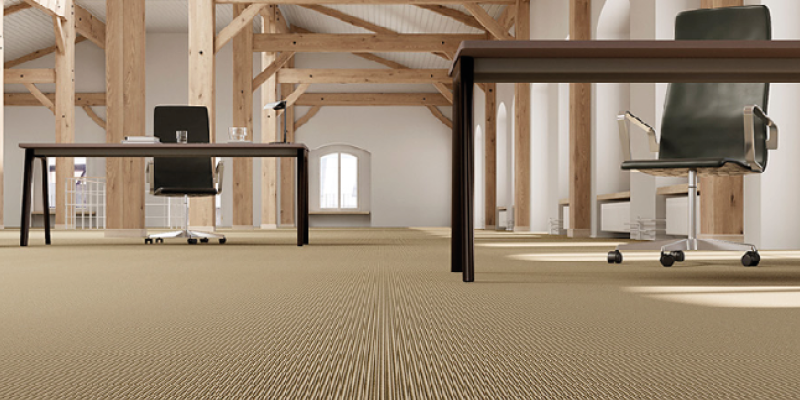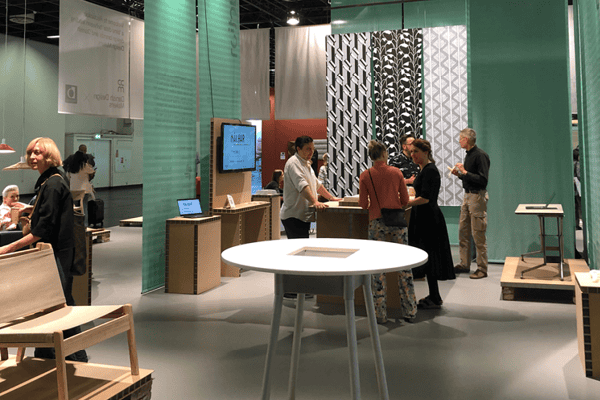
Have you ever thought about how wall-to-wall carpets are made? What they are made from? What do companies do with them when warn out?
We were quite surprised of how many layers such carpets consist of when we started to study them in connection to determining and studying additional fibers for our textile section.
Purpose
The purpose of the study was to learn:
- which kinds of wall-to-wall carpets exist
- how they are produced
- what types of fibers and other materials are used in carpets
We are currently working on a model that can calculate the climate impact from the weight and production method of the different layers of a carpet similar to the other sections in our screening tool.
Limited product knowledge
You build wall-to-wall carpet tiles from several different layers. And often, carpet distributors don’t know much about what the carpets they sell consist of. You can only see the upper and bottom layer and the literature and data on the subject is very limited. Usually, a product description of a carpet containing latex, PP fibers, glass fiber etc. will only say 100% nylon carpet if that’s the top layer fiber. From our perspective, this is a problem.
Lack of data
We only found one useful and trustworthy LCA on this type of carpet. There are several EPD’s but the problem with them is that they only provide the total energy consumption and total climate emission. They do not differ between the many layers of the carpet and therefore, we cannot tell which part of the carpet’s life cycle or which materials bear the main emissions.
Luckily, we had a lot of help from two of our customers, two carpet manufacturers that provided us with primary data on their production, composition, and materials of their carpets.
In general, there is a significant lack of data on this area. But with help from carpet manufacturers, we now know more about which materials these types of carpets consist of. Also, we have succeeded in finding valid data about these materials in the database called EcoInvent.
Another challenge is that the carpet industry is very secretive about the compositions and recipes for their products. This means that it can be very difficult to figure out which materials the carpets you sell are made of. This closedness might contribute to keeping the industry in old traditions and slowing development, innovation, and transition to greener products.
The composition of a carpet
A standard wall-to-wall carpet is either produced by tufting, weaving or needle punching – but most often tufting. On top, there is the visible fiber layer that is tufted together with the below layer called primary backing. Underneath is a layer of primary coating consisting of glue mixed with filling material such as chalk. Next is a secondary backing, also constructed as a square pattern and under this is a stabilizing layer made from glass fibers. Finally, an optional layer with fire retardant materials might constitute the bottom of such a carpet. This is mostly seen in UK, because it is a legal requirement to add fire retardants to such products (see illustration).
Not recyclable
There are not many different production methods, so most of these types of carpets are produced the same way. They use quite high amounts of synthetic latex which cause high emissions. And because of the secretive attitude in the industry, it is difficult to know whether anyone is working on greener and more responsible production methods and alternative materials. We know that some carpet manufacturers market their products as latex free, but they do not reveal their alternative materials. This makes it impossible to know whether their products are less polluting or less CO2eq emitting than others.
Another result from the study is that currently, carpets cannot be recycled because of the way they are produced. They are glued or melted together and cannot be disassembled. Therefore, most are sent to burning unless they contain PVC in which the chloride part makes it too toxic to burn. Instead, it is sent to landfills.
As a carpet manufacturer, it would be highly beneficial for you to focus on actively reducing your climate emissions, which can contribute positively to the green transition. As a carpet distributor, you should demand more openness from your suppliers and call for collaborations on developing more responsible products.
Measuring on carpets
We are still working on collecting data on wall-to-wall carpets to be able to create a carpets section in our tool. For now, calculations on materials as well as the production processes are done manually by our engineers.


